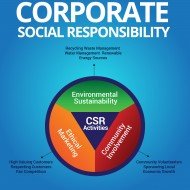Posted by Managementguru in Human Resource, Training & Development, Video Lecturers
on Jan 13th, 2015 | 0 comments

Talent Acquisition and Compensation Benefits A lecture on Talent Acquisition and Compensation by Dr. Armin Trost Human Resource Management Lecture – Talent Acquisition What does the traditional approach in recruiting look like? How is a company able to position and present itself as an attractive place to work through building an employer brand? Which active search strategies help companies to find and approach passive candidates? How can companies retain promising and talented candidates? You Don’t Create Your Employment Brand, Your Candidates And Employees Do” – @ChiHeadhunter Talent hits a target no one else can hit; genius hits a target no one else can see. – Arthur Schopenhauer The following video lecture by Dr. Armin Trost clearly indicates his knowledge and experience on the subject. Visit this link to know more about this HR Expert- Armin Trost Human Resource Management Lecture – Candidate Selection During a company’s recruiting process how are the most suitable candidates selected and which risks need to be controlled? How can a company determine a candidate’s future performance? Which selection criteria are typically used? What are the most commonly used selection methods? Whenever you are asked if you can do a job, tell ‘em: ‘Certainly I can!’ Then get busy and find out how to do it. – Theodore Roosevelt Find out what you like doing best and get someone to pay you for doing it. – Katherine Whitehorn Human Resource Management Lecture – Compensation and Benefits What is equity? Which components make up total reward and based on which factors are these components determined? How does fixed and variable pay work in practice? What are benefits and why are they there? Under which conditions does money impact motivation for performance? Strive not to be a success, but rather to be of value. – Albert Einstein The mind is everything. What you think you become. – Buddha Related Videos: HRM Video 1 HRM Video...

Posted by Managementguru in Business Management, Entrepreneurship, How To, Marketing, Project Management, Startups
on Jan 5th, 2015 | 0 comments

Startup Business Plan for a Restaurant The success of any business, start with a good and efficient plan and this is true in the case of food service trades like restaurants. Generally, Startup food business planning for a restaurant should begin with an executive summary, which will give a summary or overview of the entire business plan. This can act as a blueprint towards guiding entrepreneurs from the initial stages to the first 3-5 years of operation. This plan will document each and every detail about the operation of the restaurant. We find the following article comprehensive and resourceful on “Great ideas for your restaurant.” Source: ALSCO.COM … Read on… http://www.alsco.com.au/2017/02/restaurant-business-plan-strategies/ Executive summary: When a professional Food service franchise business consultant is asked, the professional will suggest that the executive summary will identify how much financing will be needed to begin with the operations. It will also specify the funding needed until the food business begins to show up profits. Experts are of the opinion that income projections for the first three to five years should also be present in this summary. This part should also encompass a description of the proposed restaurant that identifies the unique aspects of the operation. Another great post on “Starting a Coffee Shop“, by Anna Kucirkova brings you concrete ideas needed to open a comfy coffee shop to rake in profits. Starting A Coffee Shop? Here’s What You Need To Know Restaurant Marketing – The Basics Concept: Professional food service franchise business consultant will also suggest that the concept, theme and the type of cuisine to be served in the restaurant and the important components that should be documented in detail in the food service startup plan. Here, the location of the restaurant should be identified. Startup expenses: In the process of startup food business planning, it is important that appropriate plan must be documented for anticipated expenses. Generally, there will be startup costs associated with the establishment of the restaurant and it will of course include one-time expenses like purchase of furniture, commercial kitchen equipment, building alterations and initial construction. In addition, other startup expenses include glassware, table linens, theme-compatible table settings, etc… Apart from these expenses, there will be administrative costs like permission from health department, business licensing fee, etc… Budgets: When it comes to preparing budgets, the costs for initial setup should be identified. Here, both fixed and variable expenses should be identified. Fixed expenses include those that are the same each month like lease payments. Variable expenses include regular menu items, whose cost will vary as per season. There are professional consultants, who can help people planning to start any type of food-related trades like a food truck business. They can give the appropriate suggestion for framing a food truck business plan. They are of the opinion that the some of the above-mentioned items like budget and startup expenses should be included in the process of the food truck business plan. Related Posts: The Viability of Running a Restaurant What is a Startup Cost? Article Source: Startup Business Plan For A...

Posted by Managementguru in Financial Accounting, Financial Management
on Dec 29th, 2014 | 0 comments

Scope of Financial Management Facebook Buys WhatsApp: Boneheaded or Brilliant? This was the title of a Forbes Article when Mark Zuckerberg acquired Whatsapp for $19 billion dollars, the price that may exceed the GNP of some of those countries. Mark is said to be an unconventional thinker and the WhatsApp acquisition shows Facebook’s determination to follow the road not yet paved. It is a bold move, yet filled with risks along the way. This is one of the finest examples of the big investment decisions of recent times and the right course of action, if you measure the number of potential users of the mobile messaging service rather than the cost of acquiring each user and the potential for selling ads to each user today. Follow these mind blowing tips to become prosperous Picture Courtesy : YoungHstlrs Financial management is one of the important aspects of overall management, which is directly asscoiated with various functional departments like personnel, marketing and production. Financial management embraces wide area with multidimensional approaches. The following are the important scope of financial management. Some of the major scope of financial management are as follows: 1. Investment Decision 2. Financing Decision 3. Dividend Decision 4. Working Capital Decision. 1. Investment Decision: The investment decision involves Risk EvaluationMeasurement of cost of capital andEstimation of expected benefits from a project. Capital budgeting and liquidity are the other two major components of investment decision. Capital budgeting takes care of the distribution of capital and commitment of funds in permanent assets to harvest revenue in future. Capital budgeting is a very focal decision as it impacts the long-term success and growth of a firm. All the same it is a very tough decision because it encompasses the estimation of costs and benefits which are uncertain and unknown. Picture Courtesy: Crowdfundingheroes 2. Financing Decision: Financing decision is related to financing mix or financial structure of the firm. The raising of funds requires decisions regarding Methods and sources of financeRelative proportion and choice between alternative sourcesTime of floatation of securities, etc. In order to meet its investment needs, a firm can raise funds from various sources. Long Term Sources of Finance: Share Capital or Equity SharesPreference Capital or Preference SharesRetained Earnings or Internal AccrualsDebenture / BondsTerm Loans from Financial Institutes, Government, and Commercial BanksVenture FundingAsset SecuritizationInternational Financing by way of Euro Issue, Foreign Currency Loans, ADR, GDR etc. Picture Courtesy: Cash & Treasury Management file Medium Term Sources of Finance: Preference Capital or Preference SharesDebenture / BondsMedium Term Loans fromFinancial InstitutesGovernment, andCommercial BanksLease FinanceHire Purchase Finance Short Term Sources of Finance: Trade CreditShort Term Loans like Working Capital Loans from Commercial BanksFixed Deposits for a period of 1 year or lessAdvances received from customersCreditorsPayablesFactoring ServicesBill Discounting etc. 3. Dividend Decision: In order to accomplish the goal of wealth maximization, a proper dividend policy must be established. One feature of dividend policy is to decide whether to distribute all the profits in the form of dividends or to plough back the profit into business. While deciding the optimum dividend payout ratio (proportion of net profits to be paid out to shareholders), the finance manager should consider the following: Investment opportunities available to the firmPlans for expansion and growth,Dividend stabilityForm of dividends, i.e., cash dividends or stock dividends, etc. 4. Working Capital Decision: Working capital decision is related to the FINANCING in current assets and current liabilities. Current assets include cash, receivables, inventory, short-term securities, etc. Current liabilities consist of creditors, bills payable, outstanding expenses, bank overdraft, etc. Current assets are those assets which are convertible into cash within a year. Similarly, current liabilities are those liabilities, which are likely to mature for payment within...

Posted by Managementguru in Business Management, CSR, Entrepreneurship, Human Resource, Leadership, Strategy
on Dec 4th, 2014 | 0 comments

Does Your Company Have What It Takes to be A Leader? Corporations that are considered leaders in terms of business performance take a common approach to CSR. The blueprint for how corporations can maximize their investments in CSR contain five essential ingredients- Business-based social purposeClear theory of changeQuality and depth of informationConcentrated effort, andPartnering with experts. 1. Business-based social purpose: There have been too many examples of CSR programs that ignore business fundamentals. Leadership-level CSR programs always directly reflect what the business is and what it does. An “innovative CSR initiative” can emphasize the company’s business purpose and flawlessly leverage its operational competencies. The social purpose of a business is aligned with and supports social issues in a way that is consistent with the unique culture and character of the business. Srinivasan Services Trust is a social arm of Sundaram Clayton Limited and TVS Motor company established in 1996 for charitable purposes. The company focuses on improving health, education, women’s empowerment, infrastructure and environment that would bring about changes in the lives of people in a community. 2. Clear theory of change: CSR is becoming indispensable. On the one hand, that’s good news because it proves its business value. On the other hand, it’s getting harder to discriminate one company’s efforts from another’s. CSR leaders develop branded approaches to drive measurable social change. Starbucks Coffee has 8,000 stores, in 34 countries that sell to 30 million customers each week has adopted an unique CSR approach. Their mission is to provide the highest quality coffee in an environment that is consistent worldwide and support the sustainability of their farmers. Starbucks could be considered compliant and even proactive in their responsibilities to stakeholders. They purchase coffee in 20-30 countries per year, as their buying agents spend 240/365 days per year on the road searching for the best coffee farms and developing relationships with customers. It involves mutually agreed upon fair pricing, economic transparency, socially responsible buying, and environmentally friendly expectations. These standards protect the farmer’s business and ensure that Starbucks can support their ethical branding with practices that respect the environment. 3. Quality and Depth of Information: Merely pin-pointing social priorities for community investment is not adequate. Leadership comes from providing employees, customers and external stakeholders with a significant depth of information about the social issue through authentic research, white papers, videos, stories, social media, and so on. Bill & Melinda Gates Foundation or the Gates Foundation is one of the largest private foundations in the world, founded by Bill and Melinda Gates. It was launched in 2000 and is said to be the largest transparently operated private foundation in the world. Guided by the belief that ‘all lives have equal value’, Bill Gates and his wife Melinda Gates the co-chairs explain about their work and their commitment in supporting the government in reaching India’s most vulnerable communities with the services they need to live healthy and productive lives. The Department of Biotechnology (DBT) under the Ministry of Science and Technology of the Government of India and the Bill & Melinda Gates Foundation in collaboration with India’s Biotechnology Industry Research Assistance Council (BIRAC) launched a call for proposals as part of Grand Challenges India to reinvent the toilet. The Department of Biotechnology and the Gates Foundation will each invest US$1 million to support Indian investigators to drive research, development, and production of the “next generation toilet.” 4. Concentrated effort: Leadership is shown by corporations that direct their efforts on one social issue and align all their internal and external resources with this issue. 5. Partnering With Experts: Leadership entails showing a high degree of credibility. This is best done through relationships with social issue experts and not-for-profit organizations. Starbucks hosted...

Posted by Managementguru in Business Management, CSR, Entrepreneurship, Human Resource, Leadership, Strategy
on Dec 4th, 2014 | 0 comments

What it takes to be a Leader What is #Corporate Social Responsibility? High performance is generally measured against key business imperatives including #competitive advantage, #sales, #talent management, #operational efficiency, #return on investment and profitability. It is no longer adequate for a corporation to revel in economic prosperity in isolation from those agents impacted by its actions. Today, a new element of leadership is making an intense difference in weighing business performance: Corporate Social Responsibility. The late 1990s and the early 2000s saw an uptake in businesses giving proceeds or providing volunteers to causes related to their brands. Some called it “corporate social responsibility”; others called it “corporate #philanthropy” or “#corporate citizenship.” Regardless of its title, it was a way for business to increase visibility while raising funds for good. The spotlight is on both increasing the firm’s bottom line and being a good corporate citizen. Keeping abreast of global trends and remaining committed to financial obligations to deliver both private and public benefits have compelled organizations to restructure their frameworks, rules, and business models. Where does the roots of CSR lie? Although the #roots of CSR lie in altruistic activities (such as donations, charity, relief work, etc.) of corporations, globally, the concept of CSR has evolved and now embraces all allied concepts such as triple bottom line, corporate citizenship, philanthropy, #strategic philanthropy, #shared value, #corporate sustainability and business responsibility. You might be wondering what is “Triple bottom line?” (abbreviated as TBL or 3BL) – The term coined by John Elkington in 1994, incorporates the notion of sustainability into business decisions. The TBL is an #accounting framework with three dimensions: social, environmental (or ecological) and financial. “A plethora of research points to a majority of stakeholders agreeing that CSR is a ‘must do’,” and 67% of consumers say they are more likely to buy products and services from a company if they know it supported good causes. Smart Corporations: As a key component in business #strategy and execution, CSR is playing a crucial role in helping organizations to be seen as leaders. Smart corporations are allocating increasing internal resources to CSR investments that include clear objectives and furnish measurable social outcomes. India is a country of multitude contradictions. On the one hand, it has grown to be one of the major economies in the world, and an increasingly important player in the emerging global order, on the other hand, it is still home to the largest number of people living in absolute poverty (even if the proportion of poor people has decreased) and the largest number of malnourished children. This is the sad state of uneven distribution of the benefits of growth which many believe, is the root cause of social unrest. Companies too have been the target of those disconcerted by this lop-sided development and as a result, their contributions to society are under severe scrutiny. Many companies have been astute to sense this development, and have responded proactively while others have done so only when advocated. What it takes to be a Leader-2...










